Developing Sector

What role do developing countries play in climate governance ?
The article discusses the crucial role of developing countries in climate governance, highlighting their vulnerability to climate change, growing greenhouse gas emissions, active participation in international negotiations, innovation and technology transfer, financing and investment needs, and capacity building requirements. It emphasizes that developing countries are essential for achieving a successful outcome in the global fight against climate change.

What are some best practices for climate risk management in the agricultural sector ?
Climate risk management is critical for the agricultural sector, which faces significant vulnerabilities due to changing weather patterns and extreme events. Key practices include assessing climate risks, integrating climate information into decision-making, enhancing ecosystem resilience, building human capacity, and planning financially with insurance. By adopting these strategies, farmers can adapt to climate change and reduce their risks, ensuring a more resilient agricultural sector.

Can private sector investments play a significant role in climate financing ?
The article discusses the potential of private sector investments in climate financing, highlighting their current involvement and potential impact on various aspects such as access to larger pools of capital, innovation, risk management, and scaling up successful approaches. It also addresses challenges and considerations like alignment with public goals, transparency, inclusivity, and regulatory frameworks. The conclusion emphasizes the importance of collaboration between public and private sectors for effective utilization of private capital in climate action.
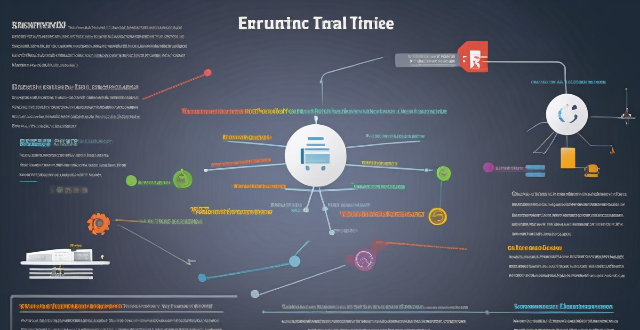
How can policymakers encourage private sector involvement in climate adaptation ?
To encourage private sector involvement in climate adaptation, policyTo encourage private sector involvement in climate adaptation, policy as creating incentives like tax policymakers can implement strategies such as creating incentives like tax breaks and subsidies, establishing clear regulations with compliance enforcement, facilitating information sharing through open data access and collaborative platforms, promoting public-private partnerships with joint projects and long-term commitments, enhancing capacity building via training programs and technical assistance, and recognizing and showcasing success stories through awards and media coverage. These steps will foster a collaborative environment where the private sector actively seeks opportunities to contribute to resilient and sustainable solutions for climate change challenges.

How is the tourism industry adapting to climate change-related risks and opportunities ?
The tourism industry, a significant contributor to the global economy, has been profoundly affected by climate change. The sector is now compelled to adapt to the associated risks and opportunities in various ways, including developing disaster management plans, building more resilient infrastructure, promoting sustainable tourism practices, diversifying offerings to attract tourists throughout the year, adopting green initiatives, developing nature-based tourism activities, creating wellness retreats, and providing educational programs about the connection between climate change and health. By implementing innovative solutions and embracing sustainability, the sector aims to mitigate the negative impacts of climate change and ensure its long-term viability.

Is wind energy a viable option for developing countries ?
Is wind energy a viable option for developing countries? Yes, wind energy offers numerous benefits such as cost-effectiveness, sustainability, job creation, and improved energy security. However, several challenges must be addressed including infrastructure needs, financing barriers, policy development, and environmental considerations. With careful planning and strategic investments, wind energy can indeed be a viable option for developing countries looking to build a sustainable future.

How can developing countries participate effectively in global climate cooperation ?
Developing countries can participate effectively in global climate cooperation by building capacity for climate action, promoting sustainable development pathways, engaging actively in international climate negotiations, and leveraging domestic resources and partnerships. This involves developing national climate policies and strategies, strengthening institutional capacity, integrating climate considerations into national development plans, fostering innovation and technology transfer, participating in global climate dialogue, seeking international support and financing, mobilizing domestic resources for climate action, and fostering cross-sectoral partnerships. By taking these steps, developing countries can contribute significantly to mitigating climate change and adapting to its impacts while promoting sustainable development and poverty reduction.

Can developed and developing countries achieve carbon neutrality at the same pace ?
The article discusses the challenges and potential solutions for developing countries to achieve carbon neutrality at the same pace as developed countries. The key differences between developed and developing countries in terms of economic development, technological advancements, and political will are highlighted. Developed countries have higher GDP per capita, more resources for research and development, and greater financial capacity to invest in renewable energy infrastructure. In contrast, developing countries have lower GDP per capita, limited resources for research and development, and less financial capacity to invest in renewable energy infrastructure. Technological advancements also play a crucial role in achieving carbon neutrality. Developed countries have advanced technology and innovation in clean energy sectors, access to cutting-edge research facilities, and well-established industries with experience in implementing sustainable practices. In contrast, developing countries have emerging technology and innovation in clean energy sectors, limited access to advanced research facilities, and infant industries with less experience in implementing sustainable practices. Political will is another factor that affects the pace of achieving carbon neutrality. Developed countries have stronger political commitment to addressing climate change through policy measures, more established regulatory frameworks for promoting renewable energy adoption, and greater public awareness and support for environmental issues. In contrast, developing countries have varying levels of political commitment to addressing climate change through policy measures, less established regulatory frameworks for promoting renewable energy adoption, and lower public awareness and support for environmental issues due to other pressing concerns such as poverty and healthcare. Developing countries face several challenges in achieving carbon neutrality, including lack of financial resources, technological barriers, and infrastructure challenges. Potential solutions for developing countries include international cooperation and funding, capacity building and education, and policy interventions and regulatory reforms. By working together through these solutions, both developed and developing countries can make significant progress towards a more sustainable future.

How do carbon credit systems impact developing countries ?
Carbon credit systems can have both positive and negative impacts on developing countries, including economic development, environmental benefits, technology transfer, market risks, social impacts, and environmental concerns. Policymakers and stakeholders must carefully consider these impacts when designing and implementing carbon credit projects in developing countries.

How can the energy sector reduce its water footprint through innovations in technology ?
The energy sector's substantial water consumption is a concern for sustainable development. Technological innovations, such as efficient cooling systems, advanced water treatment, renewable energy integration, smart water management, waste heat recovery, and improved desalination methods, can help reduce the sector's water footprint. These innovations offer benefits like resource conservation, cost efficiency, and reduced environmental impact, ultimately contributing to global water security.

How can developing countries benefit from implementing renewable energy solutions ?
Renewable energy solutions offer significant benefits for developing countries, including reduced energy costs, job creation, improved health and environmental quality, increased energy security, and climate change mitigation. By investing in renewable energy infrastructure, these countries can build more sustainable and prosperous futures for themselves and their citizens.

How does Fintech drive innovation in the financial sector ?
Fintech is driving innovation in the financial sector by enhancing efficiency, democratizing access to services, improving customer experience, facilitating financial inclusion, enhancing security and compliance, and fostering innovation and collaboration.

In what ways can developing countries participate effectively in global climate governance ?
**How Developing Countries Can Effectively Participate in Global Climate Governance** Developing countries are pivotal in global climate governance due to their disproportionate impact from climate change. Their effective participation can be achieved through several strategies: 1. **Capacity Building**: This involves enhancing educational programs to raise climate awareness and training local experts. It also includes investing in sustainable infrastructure and establishing research institutions. 2. **Policy Integration**: Countries should enact climate-related legislation, set emission reduction targets, and ensure policy alignment across different sectors while engaging stakeholders. 3. **Finance and Investment**: Access international and domestic funds for climate action, and make smart investments in renewable energy and sustainable agriculture. 4. **Technology Transfer and Innovation**: Developing countries should form technology partnerships, create exchange platforms, and encourage local innovation through R&D and incentives. 5. **Participation in International Negotiations**: They should prepare well for negotiations, build coalitions, advocate for their interests, and use forums for dialogue at international conferences. Through these strategies, developing countries can not only protect themselves but also significantly contribute to the global fight against climate change.

How does climate debt affect developing countries ?
The concept of climate debt acknowledges the unequal impact of climate change on developing countries, which have contributed less to the problem but suffer more from its effects. This includes economic losses, social challenges such as health concerns and food insecurity, environmental threats like biodiversity loss and water scarcity, and political and legal issues including migration and international agreements. To address these challenges, initiatives like financial transfers, technology sharing, capacity building, debt forgiveness, and just transition policies are being implemented. Recognizing and supporting the needs of developing nations is crucial for achieving a more equitable and sustainable global future.
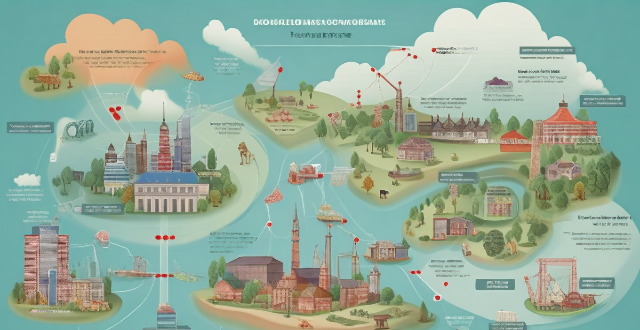
Can developing countries achieve the same climate goals as developed ones ?
This discussion explores the complexities surrounding whether developing countries can achieve the same climate goals as developed ones. It outlines the challenges such as financial constraints, infrastructure gaps, and socioeconomic barriers, but also highlights opportunities like leapfrogging technology, policy innovations, and cultural adaptability. The conclusion suggests that with international support, strategic policy-making, and a focus on sustainable development, developing nations can make significant progress towards sustainability.
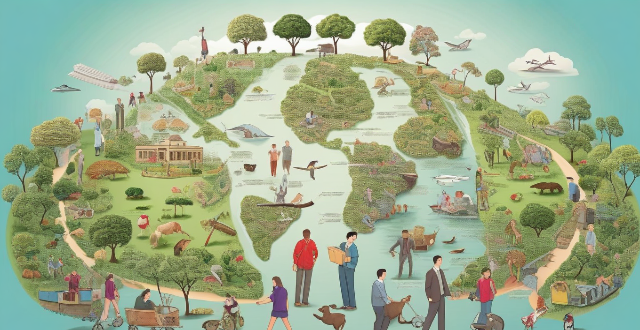
How do developing countries participate in international climate agreements ?
Developing countries play a crucial role in the global effort to combat climate change. Their participation in international climate agreements is essential for achieving a sustainable future for all nations. This article discusses how developing countries can engage with these agreements and contribute to global climate action by prioritizing education and awareness, seeking technical assistance, accessing financial and technological support, ensuring inclusivity and representation, building capacity through institutional strengthening and training programs, and engaging in collaboration and partnerships. By addressing these key points, developing countries can play a significant role in shaping global climate policy and contributing to a more sustainable future for our planet.

What are the major sources of climate finance and how are they allocated ?
The text discusses the main sources of climate finance, which include public sector funding, private sector investment, and multilateral institutions. Public sector funding is provided through government budgets, international climate funds, and domestic climate funds. Private sector investment comes from corporate sustainability initiatives, private climate funds, and impact investing. Multilateral institutions such as development banks, international financial institutions, and United Nations agencies also contribute to climate finance. These sources are crucial for supporting climate action globally, with allocations focused on reducing greenhouse gas emissions, adapting to the impacts of climate change, and promoting sustainable development.
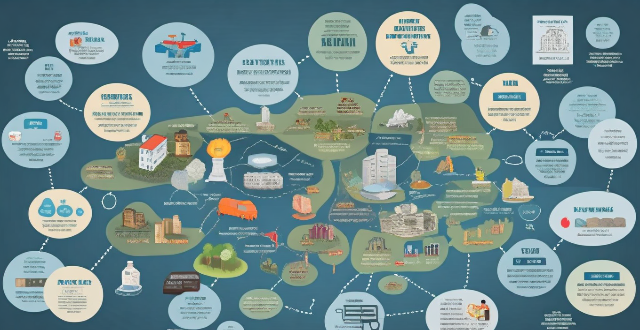
How do climate policies vary between developed and developing countries ?
This article compares the climate policies of developed and developing countries, highlighting differences in economic resources, technological capabilities, and political priorities. Developed countries have larger economies and more financial resources to invest in climate change initiatives, while developing countries face challenges due to limited financial resources. Technological capabilities also differ significantly, with developed countries possessing advanced technologies for renewable energy and emission reduction strategies, while developing countries lack such infrastructure. Political priorities also vary, with developed countries often prioritizing climate action, while developing countries may prioritize other pressing issues. The article concludes that international cooperation and support mechanisms are crucial for bridging these gaps and fostering a global response to climate change that is both equitable and effective.
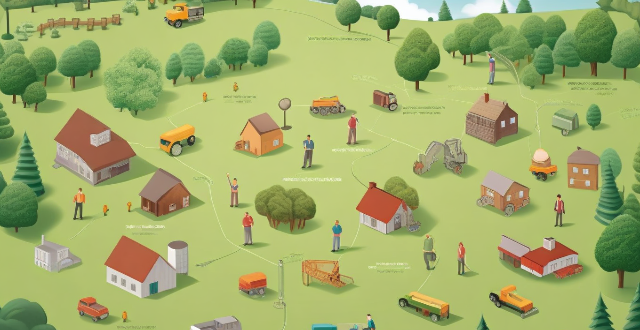
How do economic indicators differ between developed and developing countries ?
Economic indicators reflect the health and performance of a country's economy, with significant differences between developed and developing countries. Developed countries typically have higher GDP and GDP per capita values, lower inflation rates, more robust social safety nets, and attract high levels of foreign direct investment (FDI). They also score high on the Human Development Index (HDI), have more balanced trade positions, and while income inequality exists, there are often stronger welfare systems to mitigate its effects. On the other hand, developing countries often have lower GDP and GDP per capita, higher inflation rates, less developed social safety nets, and receive less FDI due to perceived risks. They also tend to have lower HDI scores, struggle with trade deficits, and face more pronounced income inequality. However, it is important to note that each country is unique and may exhibit characteristics that do not strictly align with typical developed or developing country traits. Economic indicators should always be considered within the context of a country's specific circumstances.

Can developing countries meet the same climate commitments as developed ones ?
Climate change is a global challenge that requires collective action from all countries, regardless of their level of development. However, the question arises: can developing countries meet the same climate commitments as developed ones? This article discusses the differences in economic and technological capabilities, international support and collaboration, and national priorities and policy choices between developed and developing countries. While there are significant differences between the two groups of countries in terms of their ability to meet stringent climate commitments, international support and collaboration can help bridge these gaps. Additionally, national priorities and policy choices play a crucial role in determining whether developing countries can successfully implement climate actions while balancing other developmental goals.

What are the challenges faced by developing countries in emission reduction ?
Developing countries face numerous challenges in reducing their greenhouse gas emissions, including lack of financial resources, technological constraints, socio-economic factors, policy and regulatory challenges, cultural and educational barriers, and natural resource availability. These challenges highlight the complex nature of emission reduction efforts in developing countries and underscore the need for international cooperation, financial assistance, and technology transfer to support their transition to a low-carbon future.

Can exercise reduce the risk of developing cardiovascular diseases ?
Cardiovascular diseases (CVDs) are a leading cause of death worldwide, and regular physical activity or exercise is one of the most effective ways to reduce the risk of developing them. Exercise helps improve blood circulation, lower cholesterol levels, reduce inflammation, manage weight, and improve glucose control. The American Heart Association recommends at least 150 minutes per week of moderate-intensity aerobic activity or 75 minutes per week of vigorous-intensity aerobic activity, along with muscle-strengthening activities at least two days per week.

What role do developing countries play in climate summit discussions ?
Developing countries play a significant role in climate summit discussions by contributing to mitigation efforts, adaptation strategies, and technology transfer. However, they face challenges such as limited resources, unequal responsibility, and lack of representation. It is crucial to recognize and address these challenges to ensure that developing countries are adequately represented and supported in climate negotiations.

What role do developing countries play in the Paris Climate Agreement ?
The Paris Climate Agreement, adopted in 2015, is a global response to the urgent need for action on climate change. It represents a significant step forward in international efforts to mitigate the effects of climate change and adapt to its impacts. Developing countries play a crucial role in this agreement, as they are disproportionately affected by climate change and have unique challenges and opportunities in addressing it. Key Points: - Many developing countries are located in regions that are particularly vulnerable to the impacts of climate change, making their participation essential for building resilience and adaptive capacity. - Developing countries have significant potential for mitigating greenhouse gas emissions through sustainable development pathways, renewable energy deployment, and forestry activities, which are vital for achieving the long-term temperature goals set out in the agreement. - The Paris Agreement recognizes the need for developed countries to provide financial and technological support to help developing countries implement their climate actions, which is crucial for enabling these countries to build low-carbon, climate-resilient economies. - Under the Paris Agreement, each country submits National Determined Contributions (NDCs), which outline their planned contributions to mitigating climate change and adapting to its impacts. Developing countries have submitted a wide range of NDCs, reflecting their diverse circumstances and priorities. - The Paris Agreement acknowledges the need to address loss and damage associated with the impacts of climate change in developing countries, particularly in vulnerable communities. This includes both slow-onset changes and sudden-onset events, such as floods and droughts. - The agreement emphasizes the importance of capacity building for developing countries to enhance their ability to implement climate actions effectively, including improving institutional arrangements, strengthening technical expertise, and fostering knowledge sharing. In conclusion, developing countries are integral participants in the Paris Climate Agreement, bringing unique perspectives, challenges, and opportunities to the global effort to combat climate change. Their active engagement is critical for achieving the goals of the agreement and ensuring a more equitable and sustainable future for all.

How do developing countries benefit from the Clean Development Mechanism (CDM) ?
How Developing Countries Benefit from the Clean Development Mechanism (CDM) The Clean Development Mechanism (CDM) of the Kyoto Protocol brings numerous benefits to developing countries, including technology transfer, sustainable development, and environmental advantages. It also enhances their capacity building, global engagement, and influences policy-making towards sustainability. Overall, the CDM aids in reducing emissions while fostering economic growth and environmental conservation.
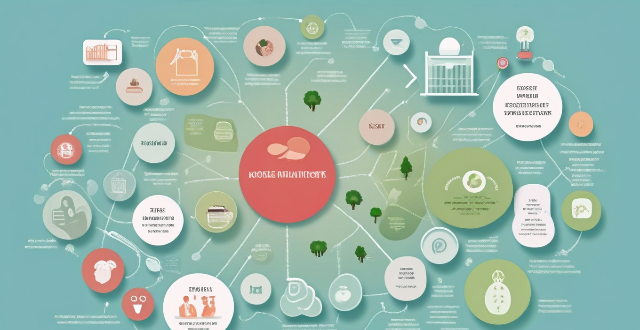
How can we improve access to healthcare services in developing countries ?
Improving access to healthcare services in developing countries is crucial for ensuring the well-being of individuals, regardless of their geographical location or economic status. Key strategies include investing in healthcare infrastructure, training and recruiting healthcare professionals, implementing community-based health programs, and utilizing technology and innovation. By adopting a multifaceted approach that addresses various aspects of the healthcare system, it is possible to make significant strides in improving access to quality healthcare services for all individuals living in developing countries.

Is it ethical for developed countries to consume more resources than developing ones ?
The question of whether developed countries should consume more resources than developing ones is complex, involving considerations of equity, environmental stewardship, economic implications, and social-political dynamics. Ethical concerns include fair distribution of resources and meeting basic needs in developing nations, as well as the responsibility to reduce ecological footprints and mitigate global climate change. Practical considerations involve economic growth, infrastructure needs, national sovereignty, and compliance with international agreements. While ethical arguments exist against overconsumption by developed countries, economic realities and political factors complicate the issue. Many developed nations are adopting sustainable practices, and international cooperation is essential for equitable resource management and conservation. Striking a balance between current needs and future preservation is a universal challenge.

How can countries with different levels of development cooperate on climate change issues ?
Climate change is a global challenge that requires the cooperation of all countries, regardless of their level of development. Here are some ways in which countries with different levels of development can work together on climate change issues: 1. **Sharing Technology and Knowledge**: Developed countries can share clean energy technologies with developing countries, while developing countries can share their indigenous knowledge about sustainable practices with developed countries. 2. **Joint Research and Development**: Countries can collaborate on research projects to develop new technologies and solutions for addressing climate change, and developed countries can provide training and capacity building programs to help developing countries build their scientific and technical capabilities. 3. **Financial Support and Investment**: Developed countries can provide financial assistance to developing countries to help them implement climate change mitigation and adaptation measures, and private sector investors from developed countries can invest in clean energy projects in developing countries. 4. **International Agreements and Cooperation**: Countries can work together under international climate agreements, such as the Paris Agreement, to set targets for reducing greenhouse gas emissions and adapting to the impacts of climate change, and developing countries can also cooperate with each other through South-South cooperation initiatives.

How has the involvement of the private sector influenced the strategies for global climate governance ?
The influence of the private sector on global climate governance strategies is evident in innovation, finance, and policy-making. Private companies invest in research and development of new technologies that can reduce greenhouse gas emissions and commercialize these technologies for widespread use. They lead the way in developing renewable energy sources and improving energy efficiency. In terms of finance, private companies issue green bonds and venture capitalists invest in startups focused on climate solutions. They also participate in carbon markets and create carbon offset programs. In policy-making, private companies engage in advocacy and lobbying efforts to shape government policies related to climate change and integrate corporate social responsibility into their business models. They collaborate with governments and international organizations in public-private partnerships and multi-stakeholder initiatives. Overall, the involvement of the private sector has significantly influenced global climate governance strategies by driving innovation, providing financial resources, and shaping policy decisions.
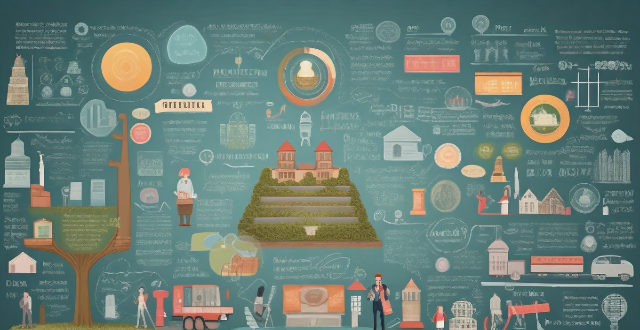
How can we address the lack of climate education in developing countries ?
Addressing the lack of climate education in developing countries requires a multi-faceted approach that considers local contexts, cultural values, and educational infrastructures. Strategies include prioritizing climate education at the policy level, enhancing access to educational resources, training and supporting educators, community engagement and empowerment, building sustainable infrastructure, research and development, and international cooperation and exchange. By implementing these strategies, developing countries can work towards bridging the gap in climate education and ensure that future generations are equipped with the knowledge to confront the challenges of our changing climate.